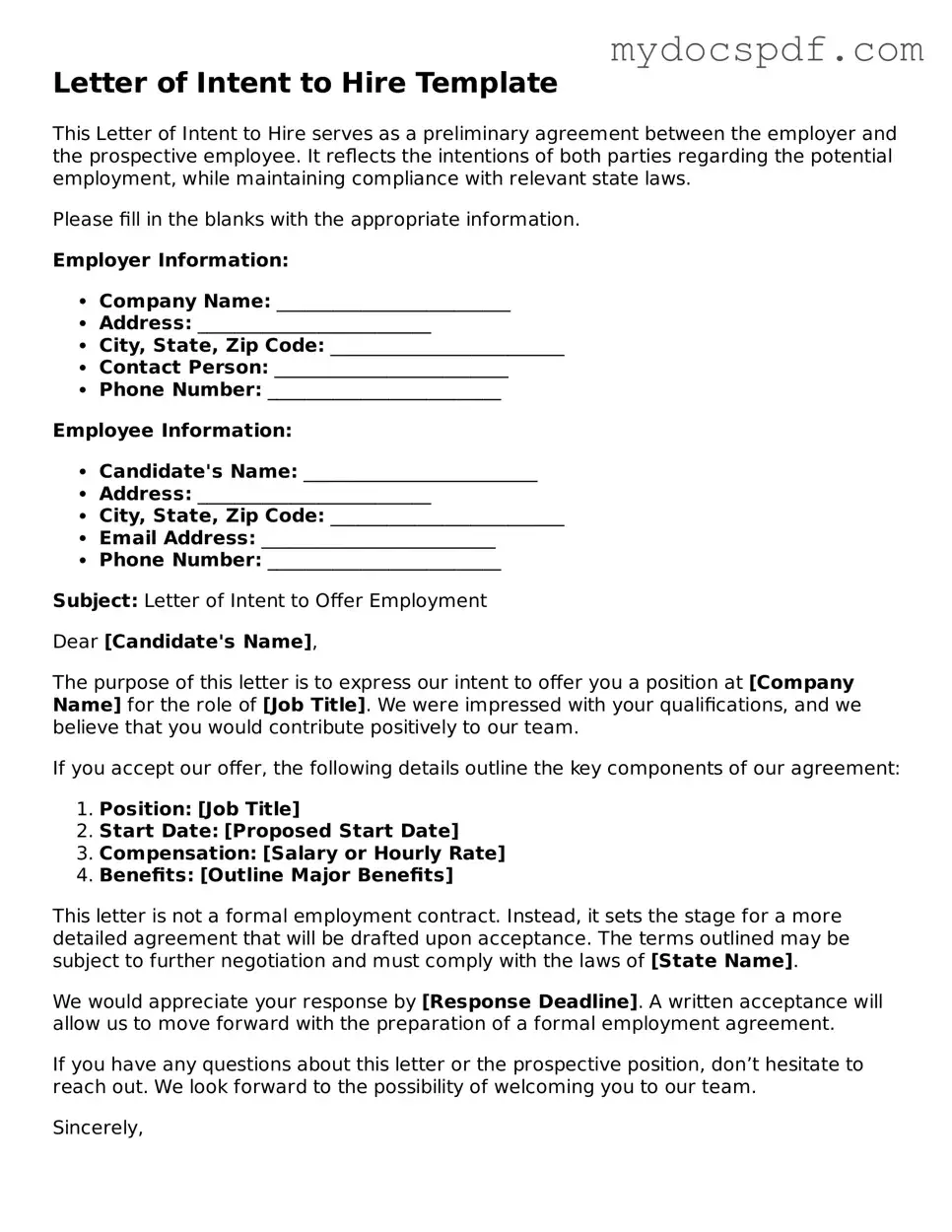Letter of Intent to Hire Template
This Letter of Intent to Hire serves as a preliminary agreement between the employer and the prospective employee. It reflects the intentions of both parties regarding the potential employment, while maintaining compliance with relevant state laws.
Please fill in the blanks with the appropriate information.
Employer Information:
- Company Name: _________________________
- Address: _________________________
- City, State, Zip Code: _________________________
- Contact Person: _________________________
- Phone Number: _________________________
Employee Information:
- Candidate's Name: _________________________
- Address: _________________________
- City, State, Zip Code: _________________________
- Email Address: _________________________
- Phone Number: _________________________
Subject: Letter of Intent to Offer Employment
Dear [Candidate's Name],
The purpose of this letter is to express our intent to offer you a position at [Company Name] for the role of [Job Title]. We were impressed with your qualifications, and we believe that you would contribute positively to our team.
If you accept our offer, the following details outline the key components of our agreement:
- Position: [Job Title]
- Start Date: [Proposed Start Date]
- Compensation: [Salary or Hourly Rate]
- Benefits: [Outline Major Benefits]
This letter is not a formal employment contract. Instead, it sets the stage for a more detailed agreement that will be drafted upon acceptance. The terms outlined may be subject to further negotiation and must comply with the laws of [State Name].
We would appreciate your response by [Response Deadline]. A written acceptance will allow us to move forward with the preparation of a formal employment agreement.
If you have any questions about this letter or the prospective position, don’t hesitate to reach out. We look forward to the possibility of welcoming you to our team.
Sincerely,
[Your Name]
[Your Title]
[Company Name]
